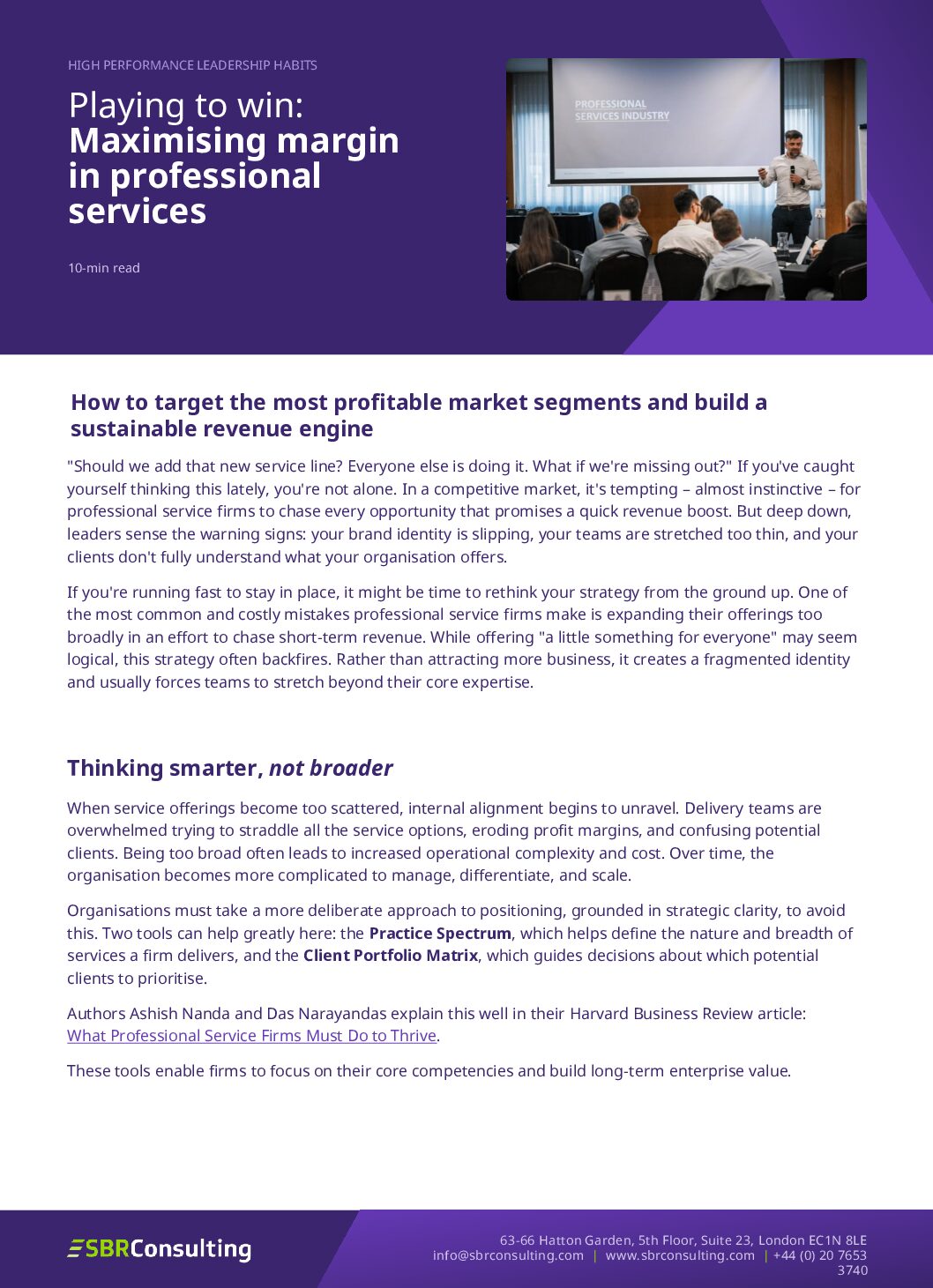
HIGH PERFORMANCE LEADERSHIP HABITS
Playing to win
Maximising margin in professional services
10 min read
How to target the most profitable market segments and build a sustainable revenue engine
“Should we add that new service line? Everyone else is doing it. What if we’re missing out?” If you’ve caught yourself thinking this lately, you’re not alone. In a competitive market, it’s tempting – almost instinctive – for professional service firms to chase every opportunity that promises a quick revenue boost. But deep down, leaders sense the warning signs: your brand identity is slipping, your teams are stretched too thin, and your clients don’t fully understand what your organisation offers.
If you’re running fast to stay in place, it might be time to rethink your strategy from the ground up. One of the most common and costly mistakes professional service firms make is expanding their offerings too broadly in an effort to chase short-term revenue. While offering “a little something for everyone” may seem logical, this strategy often backfires. Rather than attracting more business, it creates a fragmented identity and usually forces teams to stretch beyond their core expertise.
Thinking smarter, not broader
When service offerings become too scattered, internal alignment begins to unravel. Delivery teams are overwhelmed trying to straddle all the service options, eroding profit margins, and confusing potential clients. Being too broad often leads to increased operational complexity and cost. Over time, the organisation becomes more complicated to manage, differentiate, and scale.
Organisations must take a more deliberate approach to positioning, grounded in strategic clarity, to avoid this. Two tools can help greatly here: the Practice Spectrum, which helps define the nature and breadth of services a firm delivers, and the Client Portfolio Matrix, which guides decisions about which potential clients to prioritise.
Authors Ashish Nanda and Das Narayandas explain this well in their Harvard Business Review article: What Professional Service Firms Must Do to Thrive.
These tools enable firms to focus on their core competencies and build long-term enterprise value.
The Practice Spectrum
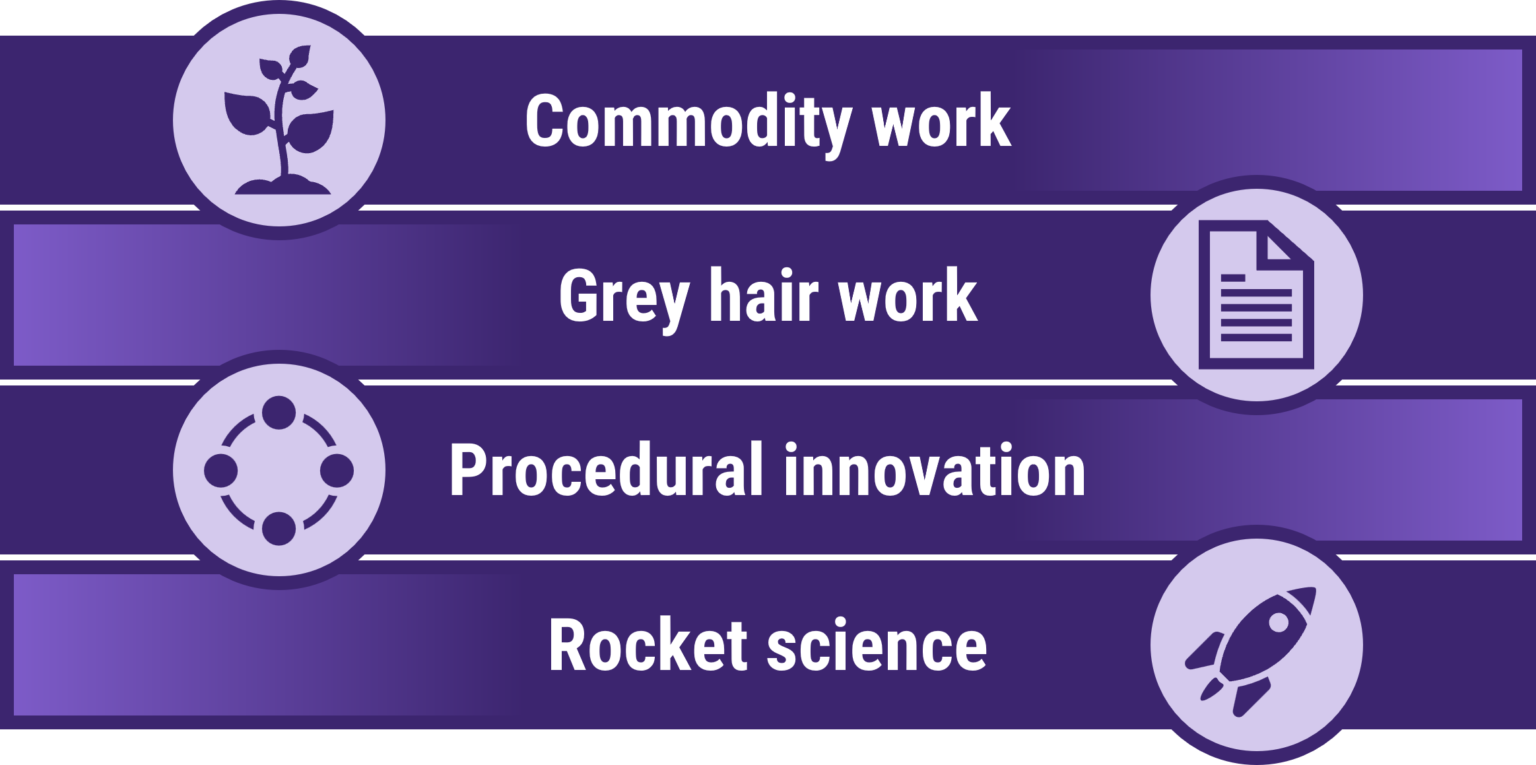
First, let’s look at the Practice Spectrum. This framework categorises your firm’s offerings based on complexity and client value through four key types.
1. Commodity work
These are standardised, rules-based services that are well-defined and repeatable across clients. Think tax filings, payroll processing, or routine audits—work that’s necessary but offers little room for differentiation or uniqueness. Clients often view this as a tick-box exercise, and competition is typically driven by factors such as price, turnaround time, or convenience. While firms can drive volume and efficiency here, over-reliance on commodity work can lead to slim margins for your team unless paired with intelligent automation or scale advantages.
2. Grey hair work
This type of work relies heavily on the depth of experience and professional judgment that comes with time in the field, hence the name. It’s about helping your clients navigate familiar yet nuanced challenges, such as handling a legal dispute based on well-established precedent or advising a business through a standard M&A transaction. The value here lies in the practitioner’s wisdom and the ability to apply solutions from the past to current problems. Clients pay for insight and confidence, not just outputs.
3. Procedural innovation
Positioned between repeatable services and highly bespoke work (#1 & 2), this category involves building and applying customisable solutions to client-specific situations. It might include developing a tailored incentive compensation plan, implementing a new CRM system, or designing an onboarding program for a growing team. These services blend process expertise with client context.
4. Rocket science
Rocket Science refers to the top tier of the spectrum – deeply strategic and cutting-edge work. It involves solving new, complex, or ambiguous problems without a clear set of guidelines or a predefined playbook. Think regulatory strategy for a biotech firm launching a first-of-its-kind therapy or crisis management in the wake of a corporate scandal. Clients value firms operating here for their creativity, technical depth, and strategic foresight. This work is usually evident, commands premium fees, and strengthens a firm’s brand as a true thought leader or specialist.
The hidden cost of doing too much
The Practice Spectrum enables firms to align strategy with greater revenue potential. It warns against relying too heavily on commodity work, which may boost revenue in the short term but threatens to erode margins and the marketplace brand with scale. It also encourages investment in high-impact, high-value services whenever possible.
Summary of the spectrum:

Take a moment to consider the services your brand currently offers and where your work falls on the spectrum.
The Client Portfolio Matrix
Another way to examine this is through the Client Portfolio Matrix, commonly associated with the Boston Consulting Group’s (BCG) Growth Share Matrix. This simple matrix helps firms assess the profitability and fit of their client base by plotting clients across two axes:
- Willingness to Pay
- Cost to Serve
The resulting four client types help firms optimise where they invest time, resources, and talent.
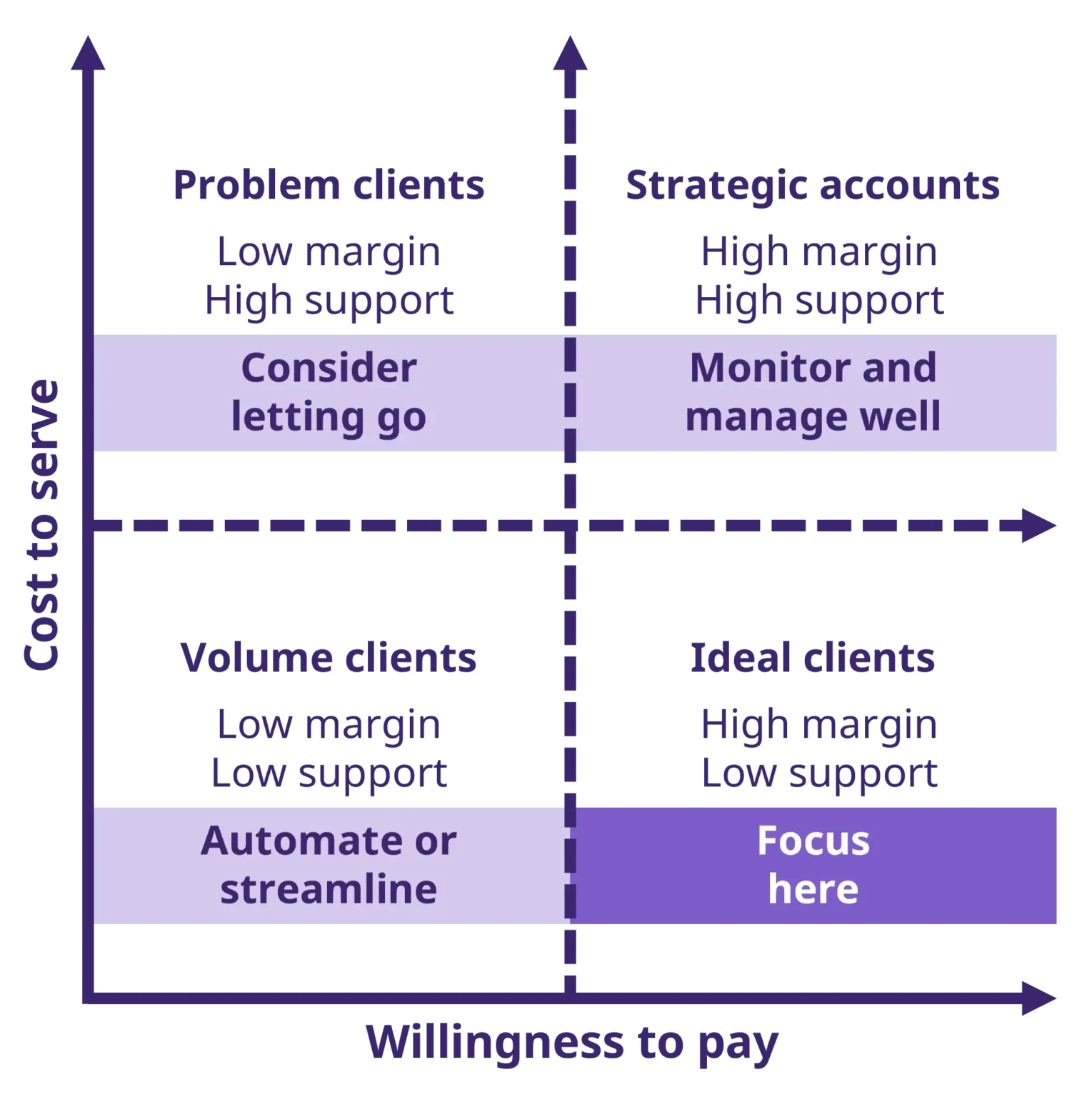
Ideal Clients: High-margin, low-support. (Focus here!)
Strategic Accounts: High margin, high support. Monitor these and manage them well.
Volume Clients: Low margin, low support. Consider automating or streamlining services provided here.
Problem Clients: Low margin, high support. Consider letting these go, as they will ultimately drag down your business book.
Building a resilient revenue engine
By combining both frameworks above, you can better clarify what services to offer, to whom, and at what price point. The next challenge is how to implement this knowledge for sustainable growth.
The danger of the ‘Messi Effect’
You may be familiar with the impact that football star Lionel Messi has when he joins or is associated with a team, league, or brand.
Professional service firms often depend on a handful of charismatic “rainmakers”—individuals with deep relationships and instinctive sales capabilities. But this is dangerous for obvious reasons. If that key player leaves, underperforms, or burns out, revenue drops, and growth stalls. Worse, their success is often unconscious competence—skills they can’t necessarily teach, clarify, or scale.
Strategy, leadership and alignment
You want to create systems that scale within your organisation, not stars that shine bright alone. Along these lines, through its work with clients, SBR Consulting has a three-pronged model that tackles the root cause:
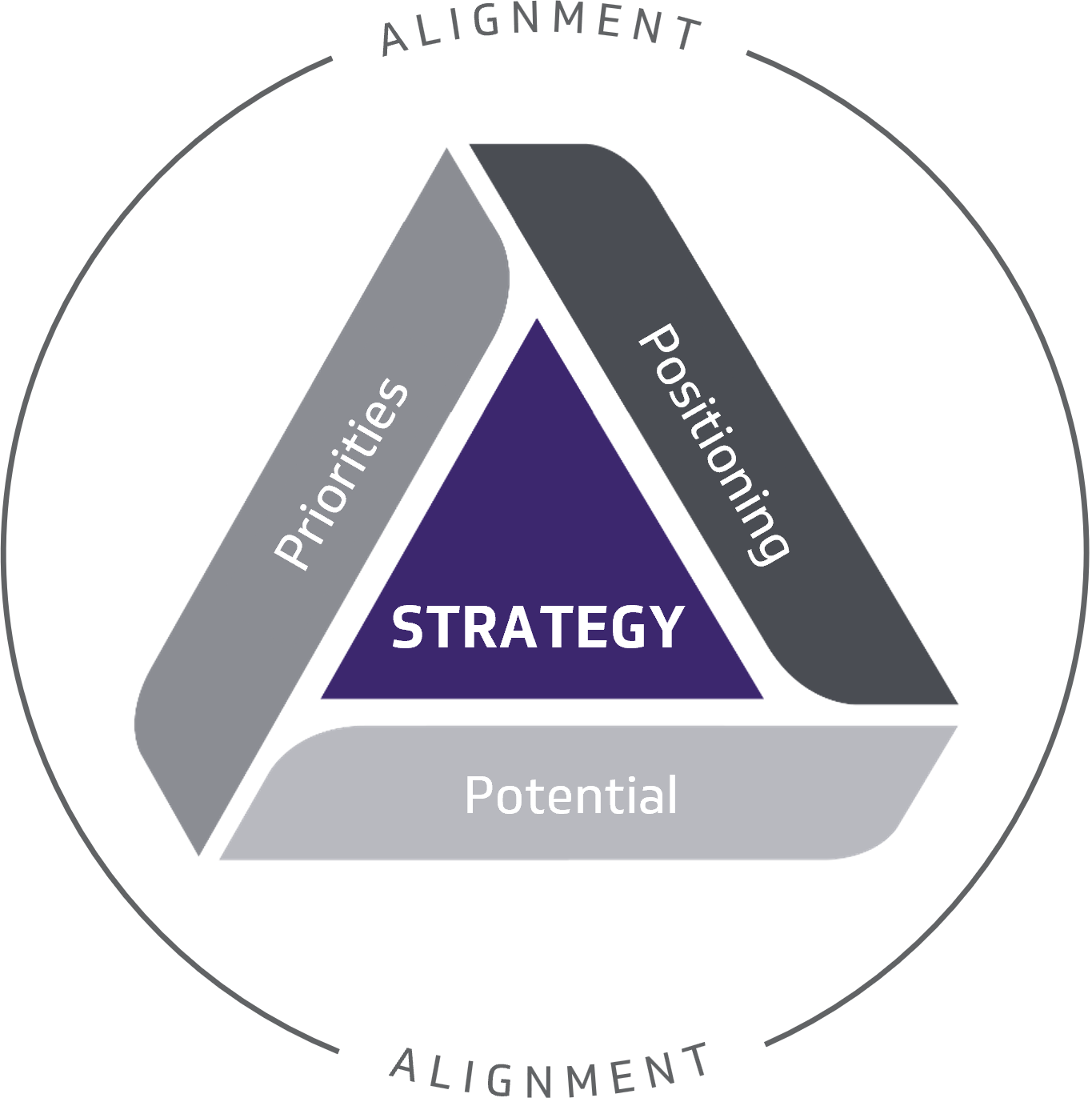
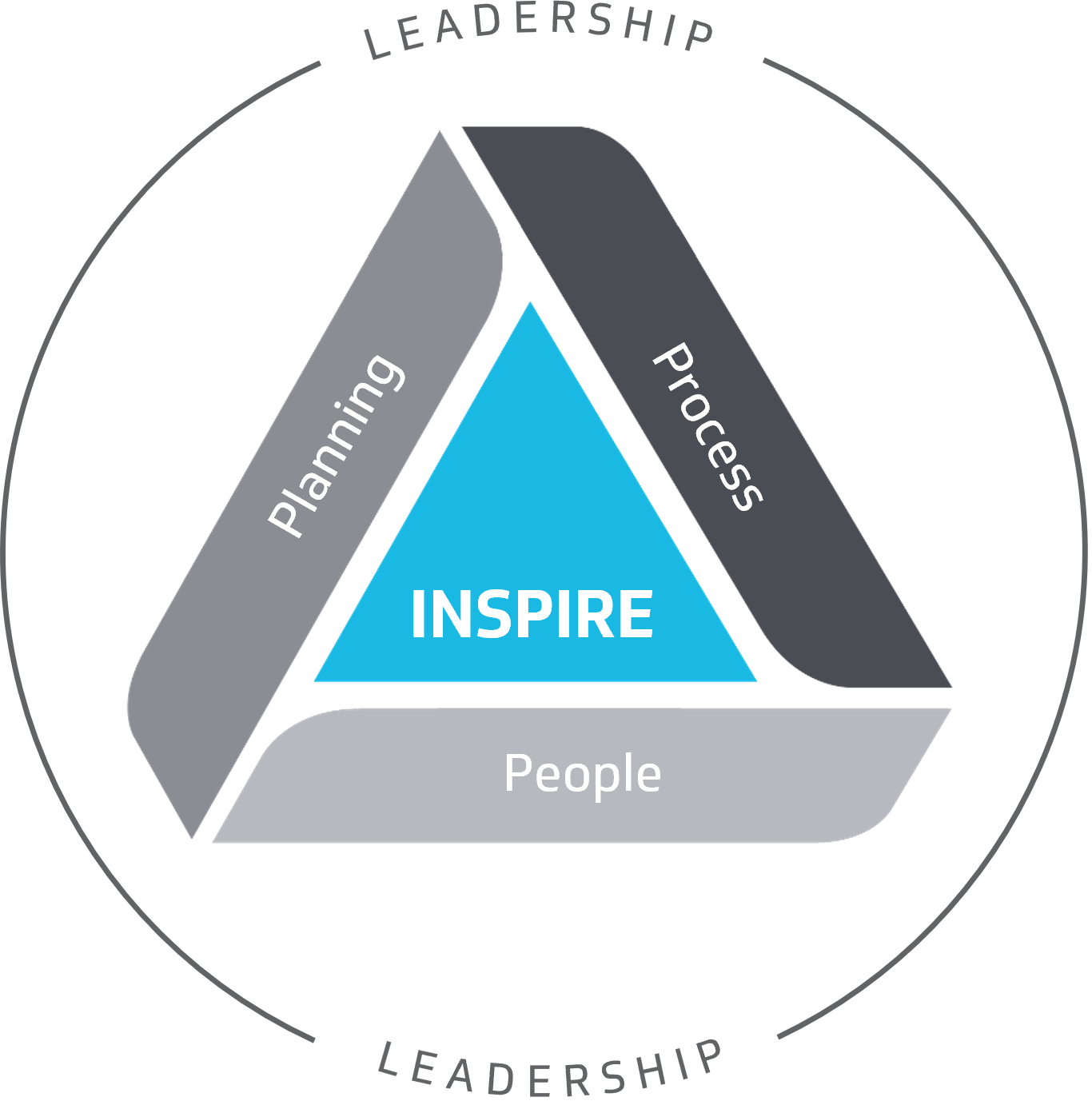
1. Strategy:
- Identify which markets have potential – this may or may not be where you have focused before.
- Set clear priorities on who you are targeting (ICP and Buyer Personas).
- Strengthen your positioning: Craft your value story.
2. Leadership:
- Inspire your teams to believe and act.
- Plan with specific vision, goals, and timelines.
- Enforce consistent, firm-wide sales processes.
3. Alignment:
- Ensure that all departments (marketing, sales, and delivery) move in tandem.
- Enforce consistent, firm-wide sales processes.
This trifecta enables firms to transition from a “hero-based” sales model to a team-based business development approach.
Related: Aligning Marketing and Sales for Commercial Excellence
The 7 P’s framework
Another tool service firms can employ when developing their strategic services is SBR Consulting’s “7 P’s Framework” of growth infrastructure:
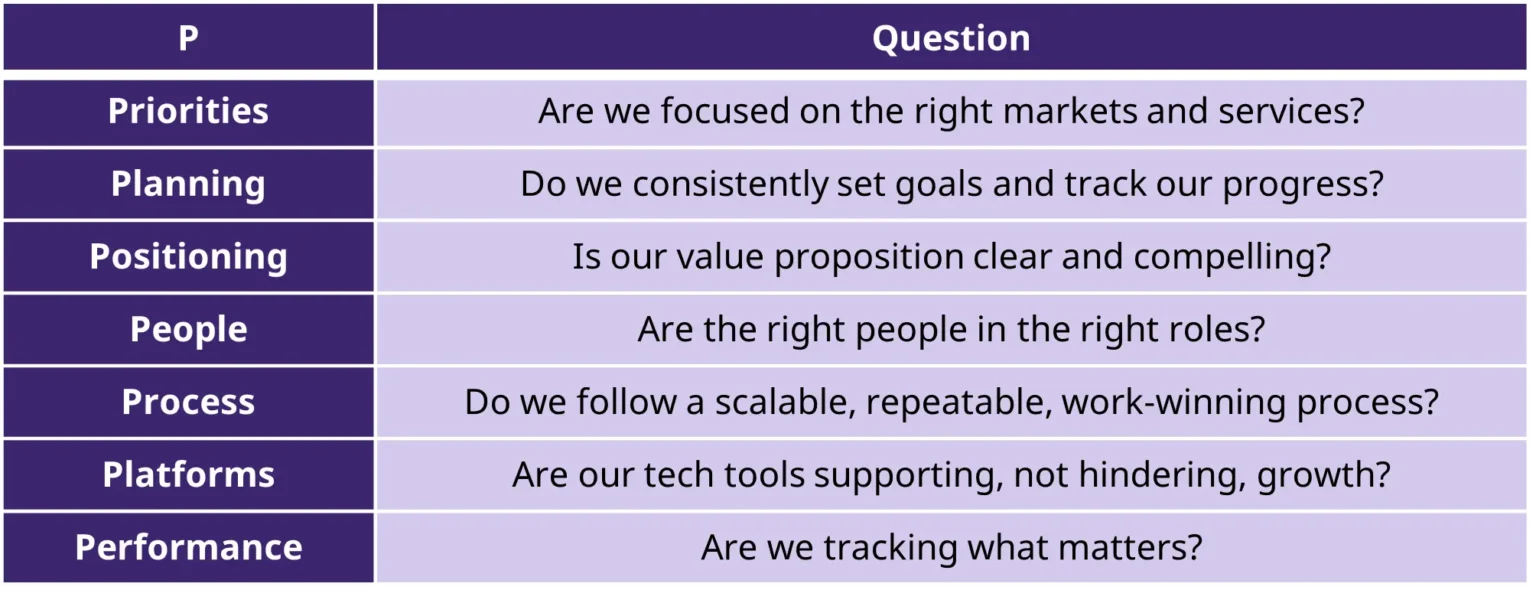
These seven questions create a common language and action plan by identifying weak links in the revenue chain and guiding investment in sustainable improvement. When firms apply this model:
- Their forecasts become more reliable.
- Pipelines become more balanced.
- Sales participation broadens across the firm.
- Margins improve as the right clients are served in the right way.
Most Most importantly, it helps organisations break free from random rainmaking and build a growing business that grows wisely.
Related: Frontline Sales Management: Forecasting and Processes for Growth
A better way to strengthen your firm’s positioning
A roadmap to build predictable, resilient revenue combines the right strategy and effective execution. Together, these ideas offer professional service firms a blueprint to:
- Strengthen positioning.
- Standardise sales excellence.
- Drive enterprise value.
- And ultimately, outlast disruption.
If you’re wondering how to strengthen your organisation’s service offerings and marketplace value, let SBR Consulting help you chart the course. Let’s talk growth.
